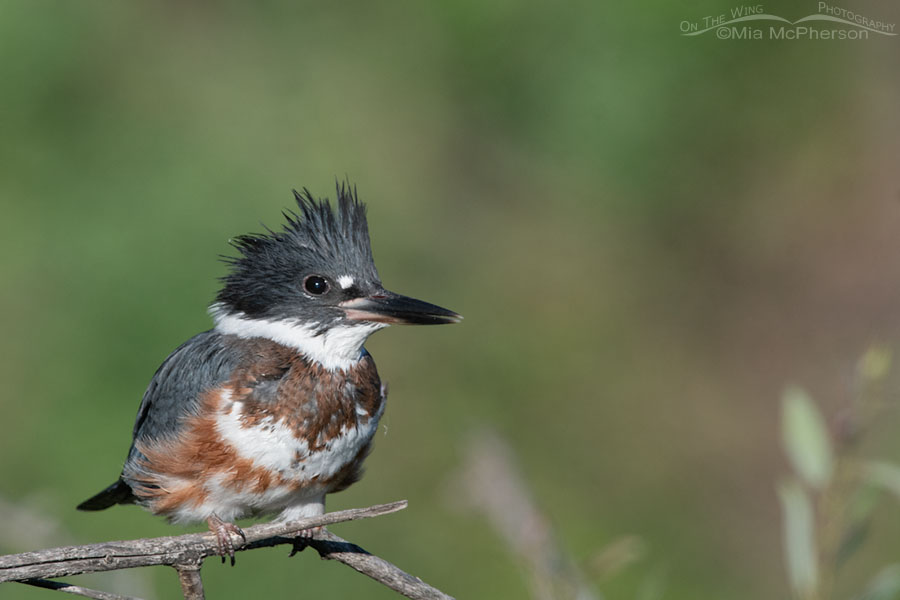 Calm immature Belted Kingfisher – Nikon D500, f7.1, 1/1000, ISO 500, -0.3 EV, Nikkor 500mm VR with 1.4x TC, natural light
Calm immature Belted Kingfisher – Nikon D500, f7.1, 1/1000, ISO 500, -0.3 EV, Nikkor 500mm VR with 1.4x TC, natural light
Three days ago I was delighted to have both an immature and an adult male Belted Kingfisher in my viewfinder as I sat next to a creek in the mountains. The young Belted Kingfisher was perched on a low branch next to a willow thicket. I believe it may have been waiting for an adult to bring it some food rather than looking for prey itself because the water was very shallow below it.
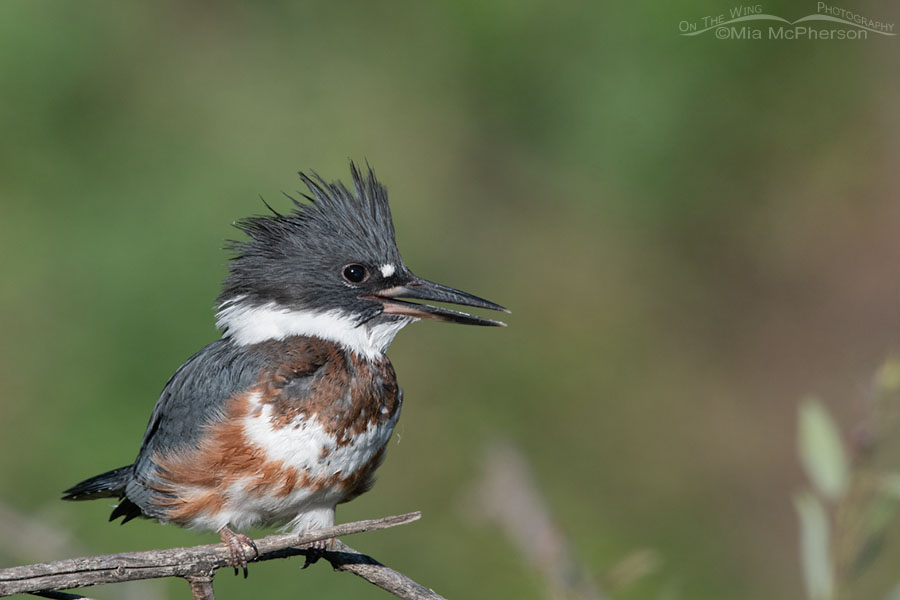 Immature Belted Kingfisher calling – Nikon D500, f7.1, 1/1000, ISO 500, -0.3 EV, Nikkor 500mm VR with 1.4x TC, natural light
Immature Belted Kingfisher calling – Nikon D500, f7.1, 1/1000, ISO 500, -0.3 EV, Nikkor 500mm VR with 1.4x TC, natural light
But I have seen immature Belted Kingfishers diving for prey on their own already this year so perhaps this young bird was simply taking a break.
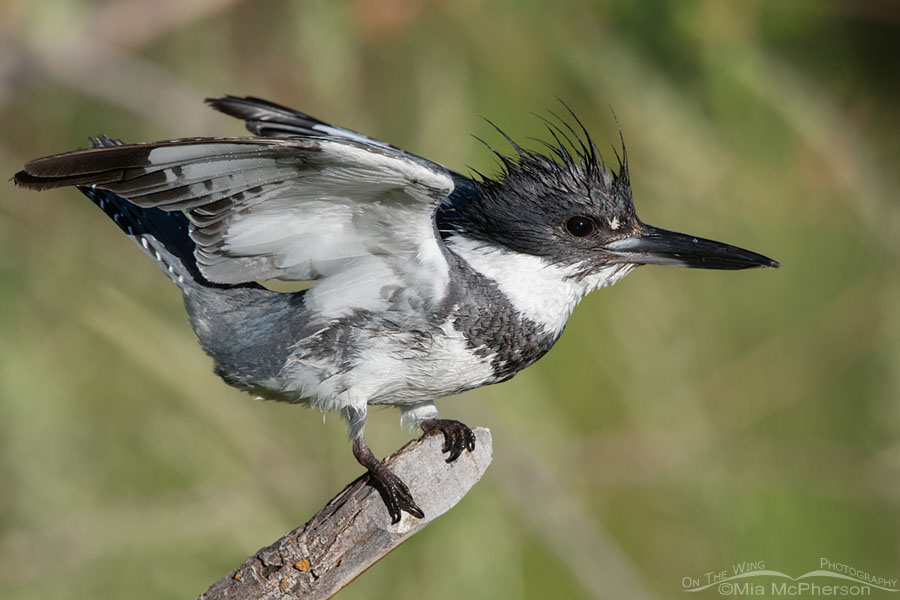 Excited adult male Belted Kingfisher – Nikon D500, f7.1, 1/1250, ISO 500, Nikkor 500mm VR with 1.4x TC, natural light
Excited adult male Belted Kingfisher – Nikon D500, f7.1, 1/1250, ISO 500, Nikkor 500mm VR with 1.4x TC, natural light
When the adult male Belted Kingfisher flew in he wasn’t getting a break. As soon as he landed the Barn and possibly Cliff Swallows were dive bombing him. The male kingfisher was so close that when he lifted his wings in defense from the swallows more than what is shown in the photo above I clipped them.
If I had been using my Nikon D810 in full frame mode I wouldn’t have clipped the wings or if my 1.4x teleconverter had been removed from I wouldn’t have had the clipping problem. I also know that parking a bit farther forward would have helped too because there would have been more space between the bird and my camera. I had quite a few images that had to be tossed into my delete bin.
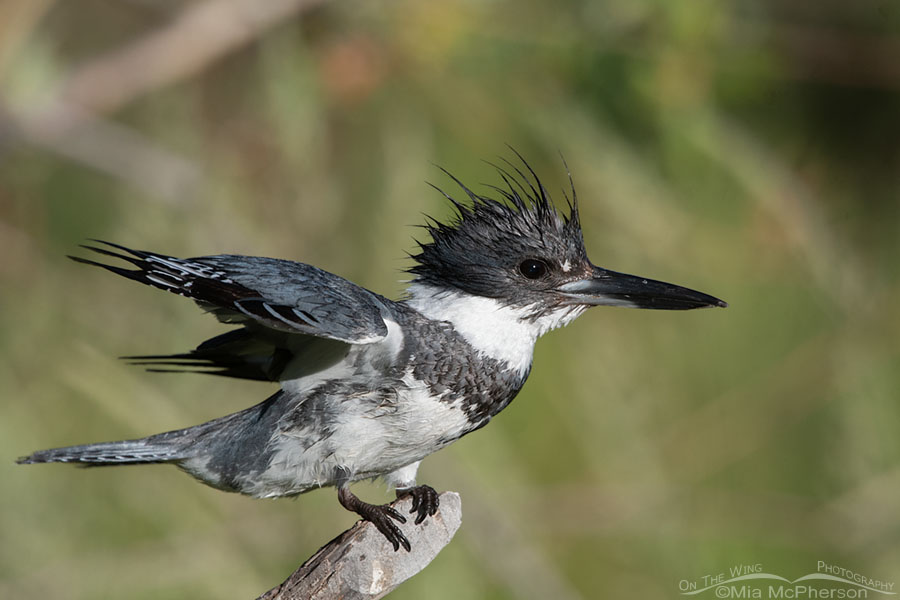 Male Belted Kingfisher settling down – Nikon D500, f7.1, 1/1250, ISO 500, Nikkor 500mm VR with 1.4x TC, natural light
Male Belted Kingfisher settling down – Nikon D500, f7.1, 1/1250, ISO 500, Nikkor 500mm VR with 1.4x TC, natural light
Kingfishers are primarily fish eaters but they do occasionally feed on insects, amphibians, reptiles, small mammals, and young birds so perhaps that is why the swallows dive bomb the kingfishers because they do have have chicks in the nest and possibly fledglings on the move right now. It is interesting to see the smaller swallows acting so aggressively towards the larger kingfishers.
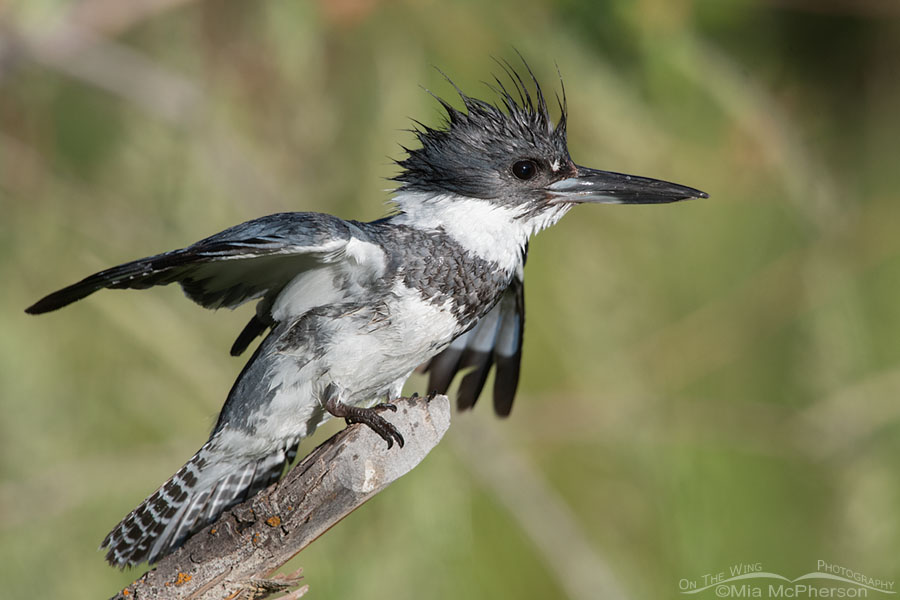 Adult male Belted Kingfisher being defensive – Nikon D500, f7.1, 1/1000, ISO 500, Nikkor 500mm VR with 1.4x TC, natural light
Adult male Belted Kingfisher being defensive – Nikon D500, f7.1, 1/1000, ISO 500, Nikkor 500mm VR with 1.4x TC, natural light
The creek where these kingfishers hunt for food has dried up even more than it was just last week. The kingfisher family may have to move on and find deeper water in order to locate and capture fish. I’m happy that I had these two Belted Kingfishers to focus on.
Life is good.
Mia
Click here to see more of my Belted Kingfisher photos plus facts and information about this species.


Really exciting to get these close-up views of the two kingfishers – you did a great job of capturing them. I think it is interesting that kingfisher feathers apparently are not waterproof, like a duck’s feathers – they clump up when wet.
Fabulous pics! As always the detail, color and composition of these shots is remarkable. Although…I gotta admit this pair of Kingfisher’s could easily fit in with an ’80’s rock band. Very cool. Thanks Mia.
The photos you didn’t delete are outstanding. Thank you.
How lucky indeed to have these beauties near you. I will never see one of them myself but thanks to your gorgeous photos and lively narrative I can share their lives.
The youngster looks so cute! Poor dad, though — getting it from both sides! Hope they’re able to get some food (and some peace). 🙂
Wonderful photos. Always nice to see offspring.